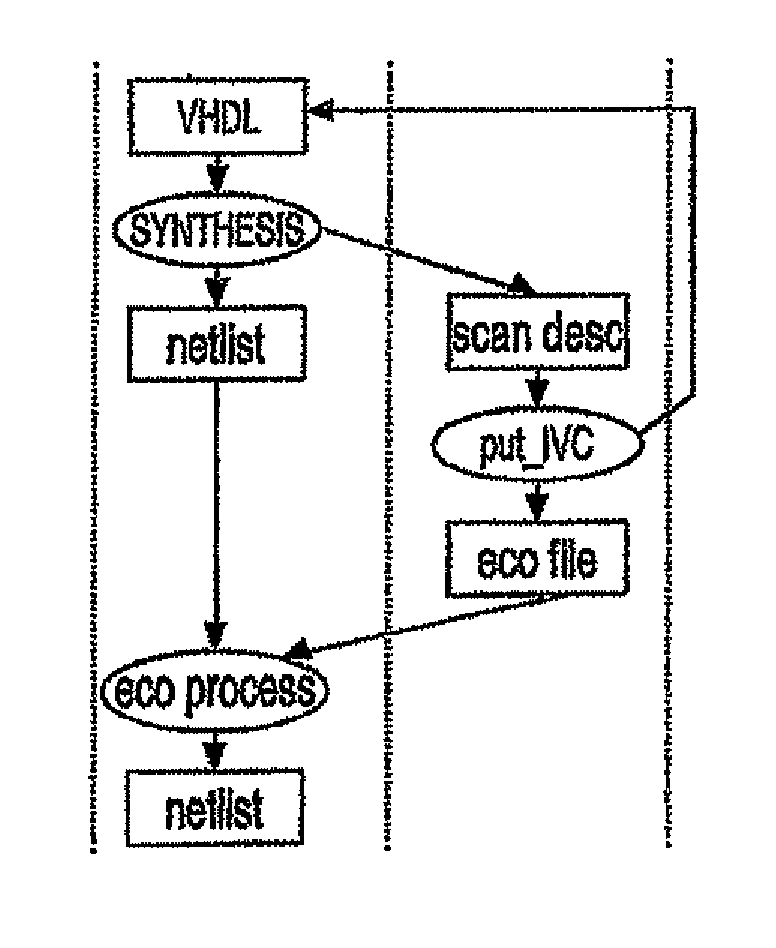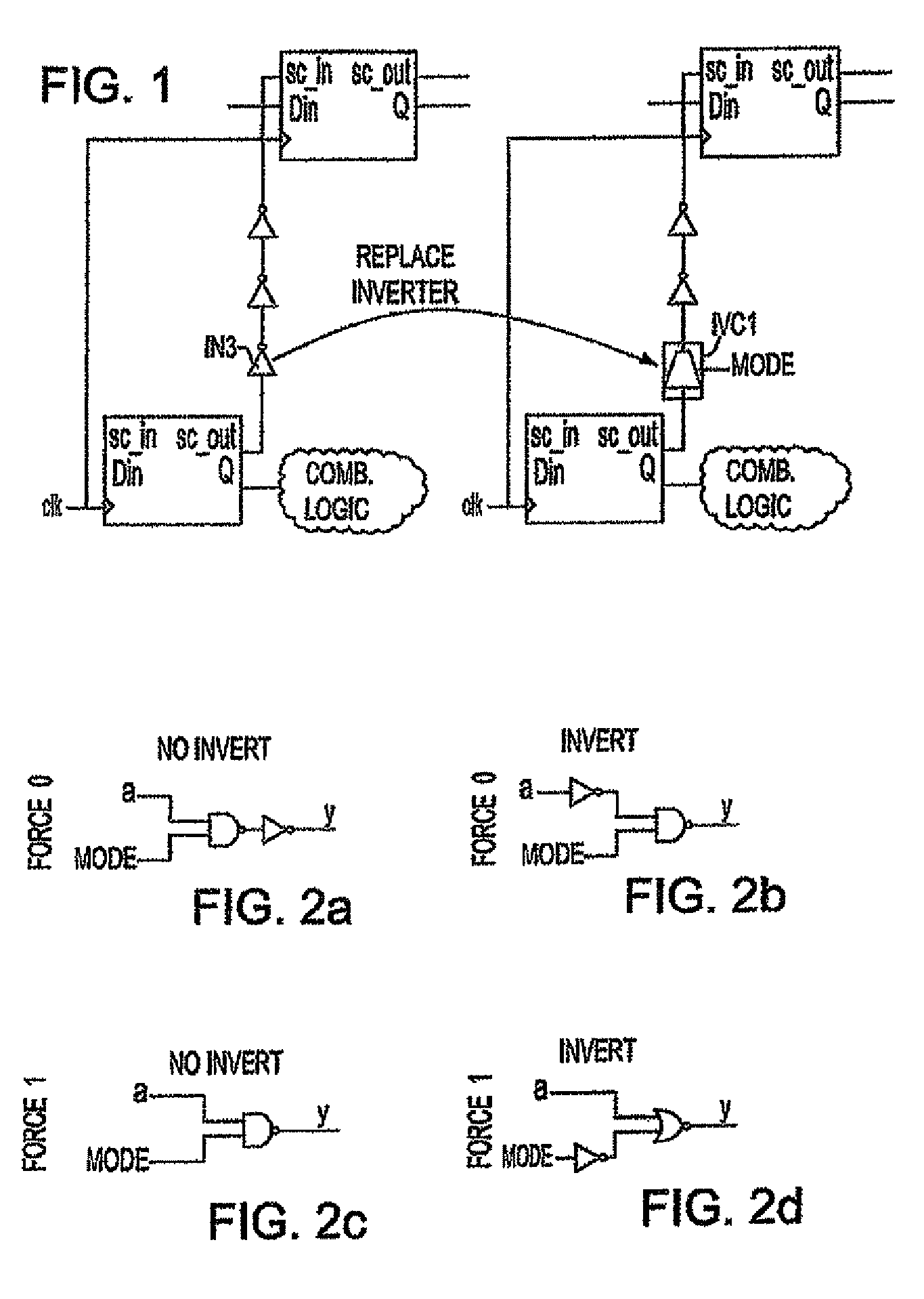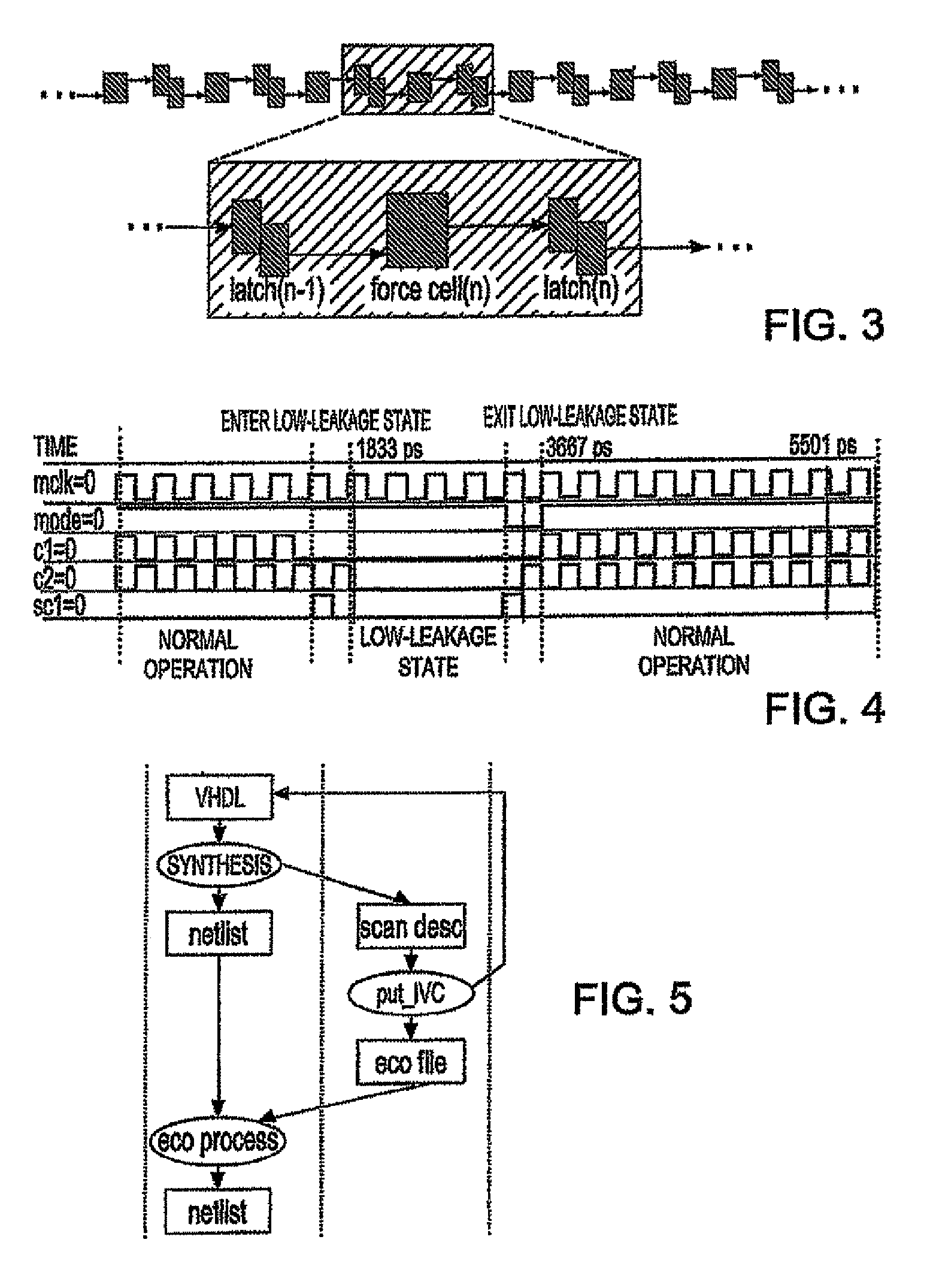Method and apparatus for on-the-fly minimum power state transition
a technology of power state transition and power state, applied in the direction of logic circuits, pulse techniques, instruments using specific components, etc., can solve the problems of secondary power consumption in energy to cool the ic, degrade ic performance and reliability, and leakage reduction, so as to reduce the overhead of implementing the novel sleep mode operation and reduce the power consumption required
- Summary
- Abstract
- Description
- Claims
- Application Information
AI Technical Summary
Benefits of technology
Problems solved by technology
Method used
Image
Examples
Embodiment Construction
[0021]At initialization, many conventional VLSI designs, i.e., microprocessors, do not initialize their flip-flops with a global reset, which would require routing a global signal and consequential degrading of the flip-flop timing. Such conventional designs instead use the scan-path to force an initial value at flip-flops, such as that design disclosed in commonly owned U.S. Pat. No. 7,100,144. Hence, in order to reset N latches, the conventional scan-path approaches require circa N clock cycles. The drawback is that where N is very large (which it is in many typical VLSI microprocessor designs), initialization time becomes critical, particularly in certain applications (e.g., Telco market, real time applications, etc).
[0022]The inventive method and VLSI scan chain structure disclosed herein provide for an improved level sensitive scan design (LSSD) or scan-path approach. The novel approach may be described broadly as “on-the-fly minimum power transition”. The “on-the-fly minimum p...
PUM
 Login to View More
Login to View More Abstract
Description
Claims
Application Information
 Login to View More
Login to View More - R&D
- Intellectual Property
- Life Sciences
- Materials
- Tech Scout
- Unparalleled Data Quality
- Higher Quality Content
- 60% Fewer Hallucinations
Browse by: Latest US Patents, China's latest patents, Technical Efficacy Thesaurus, Application Domain, Technology Topic, Popular Technical Reports.
© 2025 PatSnap. All rights reserved.Legal|Privacy policy|Modern Slavery Act Transparency Statement|Sitemap|About US| Contact US: help@patsnap.com



